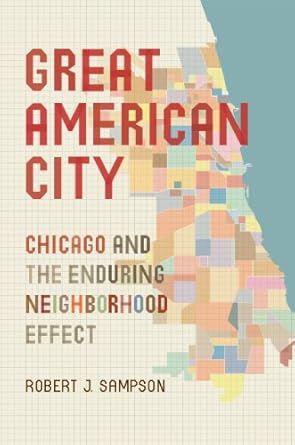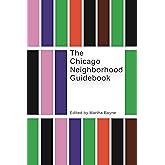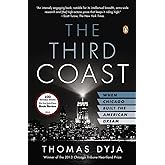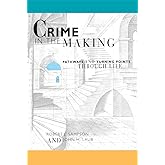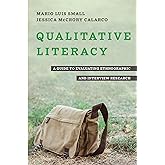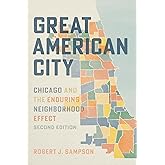
Enjoy fast, free delivery, exclusive deals, and award-winning movies & TV shows with Prime
Try Prime
and start saving today with fast, free delivery
Amazon Prime includes:
Fast, FREE Delivery is available to Prime members. To join, select "Try Amazon Prime and start saving today with Fast, FREE Delivery" below the Add to Cart button.
Amazon Prime members enjoy:- Cardmembers earn 5% Back at Amazon.com with a Prime Credit Card.
- Unlimited Free Two-Day Delivery
- Streaming of thousands of movies and TV shows with limited ads on Prime Video.
- A Kindle book to borrow for free each month - with no due dates
- Listen to over 2 million songs and hundreds of playlists
- Unlimited photo storage with anywhere access
Important: Your credit card will NOT be charged when you start your free trial or if you cancel during the trial period. If you're happy with Amazon Prime, do nothing. At the end of the free trial, your membership will automatically upgrade to a monthly membership.
Buy new:
$40.39$40.39
Ships from: Amazon Sold by: srwilson62
Save with Used - Very Good
$8.25$8.25

Download the free Kindle app and start reading Kindle books instantly on your smartphone, tablet, or computer - no Kindle device required.
Read instantly on your browser with Kindle for Web.
Using your mobile phone camera - scan the code below and download the Kindle app.

Follow the author
OK
Great American City: Chicago and the Enduring Neighborhood Effect
There is a newer edition of this item:
$26.50
Only 4 left in stock (more on the way).
Purchase options and add-ons
To demonstrate the powerfully enduring impact of place, Robert J. Sampson presents here the fruits of over a decade’s research in Chicago combined with his own unique personal observations about life in the city, from Cabrini Green to Trump Tower and Millennium Park to the Robert Taylor Homes. He discovers that neighborhoods influence a remarkably wide variety of social phenomena, including crime, health, civic engagement, home foreclosures, teen births, altruism, leadership networks, and immigration. Even national crises cannot halt the impact of place, Sampson finds, as he analyzes the consequences of the Great Recession and its aftermath, bringing his magisterial study up to the fall of 2010.
Following in the influential tradition of the Chicago School of urban studies but updated for the twenty-first century, Great American City is at once a landmark research project, a commanding argument for a new theory of social life, and the story of an iconic city.
- ISBN-100226734560
- ISBN-13978-0226734569
- PublisherUniversity of Chicago Press
- Publication dateFebruary 15, 2012
- LanguageEnglish
- Dimensions6 x 1.6 x 9 inches
- Print length552 pages
Similar items that ship from close to you
Editorial Reviews
Review
“A revolution is under way in social science, and Robert Sampson’s Great American City offers an excellent exemplar of the new turn. . . The book convincingly demonstrates that individual outcomes are not the simple result of atomistic choices but reflect highly contingent decisions that unfold within spatially grounded social structures and institutionalized processes that limit options and reproduce existing inequalities between individuals, households, and neighborhoods. By situating human beings within a well-defined social system, Sampson contextualizes individual actors and their decisions socially, spatially, and institutionally.”
-- Douglas S. Massey ― Science“Great American City takes us from the grand theories conjured by its commanding title, down to the iconic street corner to see what it really means when windows are broken. This is a book of big, challenging, provocative, and inspiring ideas, as well as of meticulous, rigorous, and exhaustive data. Sampson has truly shown his shoulders big enough to be counted among Chicago’s most venerated social observers, as well as the most astute theorists of place.”
-- Mary Pattillo ― Northwestern University“After Great American City we will never be able to view cities in the same way again. This is one of those rare books that deeply affect how we think about the world. It teaches us afresh how the neighborhoods we live in affect us and the people around us. And there are also immense policy implications. Robert Sampson shows definitively how the fate of the urban poor is so very dependent on the communities in which they live.”
-- George Akerlof ― Nobel Laureate in Economics, University of California at Berkeley“Robert J. Sampson's important new book challenges prevailing notions of community decline. Sampson argues that our communities continue to matter a great deal and that our lives are powerfully shaped by where we live. . . . [With] lots of empirical detail and theoretically driven, Great American City shows the striking persistence of poverty across its neighborhoods from 1960 to 2000."
“It’s good reading which is a rare compliment to a sociologist. . . A very important book.”
-- Milt Rosenberg ― WGN Radio"Robert J. Sampson's very readable research findings are theoretically rich, cutting-edge in urban research, and should be inspirational for future researchers in urban sociology. . . . A definite must read for anyone interested in groundbreaking upper-level urban sociology. Essential."
-- Choice
"Robert Sampson's Great American City is a landmark work in urban sociology in part because it contributes so richly in different ways to our understanding of how neighborhoods operate in Chicago. But it is also a landmark work because it so richly in so many different ways strongly asserts that the community in community studies matters."
-- Claude Fischer ― City & Community
"Rob Sampson has written a great book. It is a must-read for almost all sociologists and demographers, and especially important for urbanists. Though I have written numerous book reviews and read countless others, this essay is by far the hardest one I've been asked to do. It is hard for two reasons: first, there is so much excellent material in Great American City to write about that it is hard to know where to begin; and second, the book is so good it is difficult to keep from being overly effusive in praising it."
-- Nancy Denton ― City & Community
“Great American City is the rare example of a highly anticipated book by a leading scholar that exceeds expectations. Combining Robert Sampson’s observations with major data collection on neighborhoods in Chicago and original analytic methods, the result is a compelling argument for the importance of place. Neither a purely theoretical nor empirical study, Great American City is an impressive model of how theory, data collection, and analytic methods can be combined to the benefit of all three endeavors. . . . Among the most important works in sociology in recent decades. . . . Through its publication, Sampson establishes himself as our modern Robert Park, and Great American City can be justly regarded as the most sophisticated Chicago School study ever produced.” -- Lincoln Quillian ― Contemporary Sociology
“There is a scene in the film Crocodile Dundee in which a young hoodlum threatens the titular protagonist with a knife. In response to his girlfriend’s tremulous observation of this fact, Dundee, unfazed, brandishes a comically much larger knife and quips sardonically, “that’s not a knife . . . THIS is a knife.” The hood turns tail, Dundee returns the knife to its sheath, and the film chugs merrily on. I was reminded of this scene several times while reading Robert J. Sampson’s Great American City. With respect to social scientists past, present, and future: THIS is a book.” -- Jeffrey M. Timberlake ― Journal of Urban Affairs
“Great American City definitely is one of the best bang-for-the-buck values in recent years. It is worth the very small investment to own this magnum opus regardless of the research site.” -- Robert J. Bursik, Jr. ― Theoretical Criminology
“Following in the influential tradition of the Chicago School of urban studies, but updating it for the twenty-first century, [Sampson] argues that communities do still matter because life is decisively shaped by where we live. Neighbourhoods influence a wide variety of phenomena including teen births, altruism and crime. Not even national crisis can destroy the enduring impact of place.” ― BBC Radio 4's "Thinking Allowed"
About the Author
Robert J. Sampson is the Henry Ford II Professor of the Social Sciences at Harvard University and coauthor of Crime in the Making: Pathways and Turning Points through Life and Shared Beginnings, Divergent Lives: Delinquent Boys to Age 70.
Product details
- Publisher : University of Chicago Press (February 15, 2012)
- Language : English
- Hardcover : 552 pages
- ISBN-10 : 0226734560
- ISBN-13 : 978-0226734569
- Item Weight : 2 pounds
- Dimensions : 6 x 1.6 x 9 inches
- Best Sellers Rank: #1,893,955 in Books (See Top 100 in Books)
- #2,585 in Sociology of Urban Areas
- #6,903 in Political Science (Books)
- #73,297 in Politics & Government (Books)
- Customer Reviews:
About the author

Discover more of the author’s books, see similar authors, read author blogs and more
Customer reviews
Customer Reviews, including Product Star Ratings help customers to learn more about the product and decide whether it is the right product for them.
To calculate the overall star rating and percentage breakdown by star, we don’t use a simple average. Instead, our system considers things like how recent a review is and if the reviewer bought the item on Amazon. It also analyzed reviews to verify trustworthiness.
Learn more how customers reviews work on Amazon-
Top reviews
Top reviews from the United States
There was a problem filtering reviews right now. Please try again later.
This book is a must-read for people interested in how a neighborhood can affect life outcomes.
My only disappointment in the book was the lack of policy prescriptions for the most disadvantaged neighborhoods. Collective efficacy plays an important role in protecting the residents of these places. But I left asking what are the models to improve collective efficacy in neighborhoods.
Top reviews from other countries
First sentence: "Imagine a world where distance has died, where globalization and high-tech wonders have rendered place irrelevant..." Second sentence: "From the North End of Boston to the North Beach of San Francisco, imagine cities where..."
Stop! Rewind! Does the world start and end with the shoreline of the USA?
If a serious academic has such a narrow-minded view of the world - supported by all those who edited, proofed, reviewed and wrote the Foreword for the book - is it any surprise that America is so out of touch with the rest of the world? Does not so many of America's problems with other parts of the world stem from this parochial outlook? Shouldn't all American education teach understanding of the world beyond the American shoreline?
I must get back to reading the book, which looks excellent.

